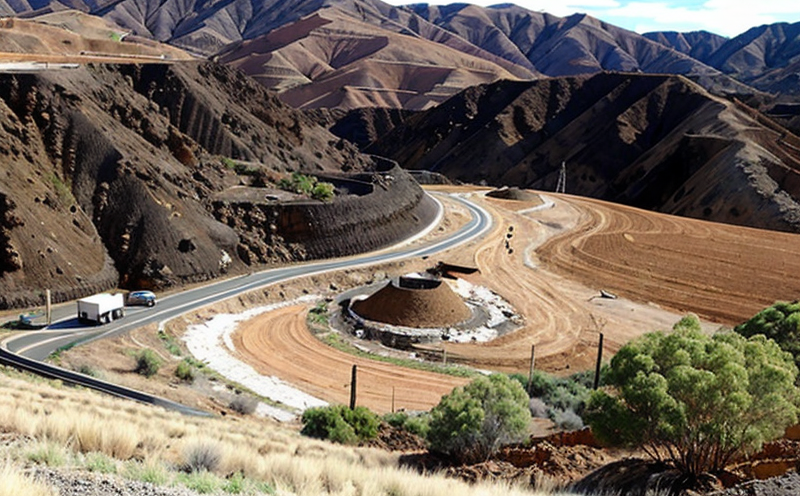ASTM D5867 Organic Carbon Content in Rehabilitated Soils Testing
The ASTM D5867 standard is a crucial tool used to determine the organic carbon content of rehabilitated soils. This test is vital for assessing the quality and effectiveness of soil rehabilitation projects, particularly those aimed at reclamation and land restoration within mining operations.
Mining activities often lead to significant environmental disturbances, necessitating comprehensive rehabilitation measures to restore the land to its former condition or a suitable alternative use. The organic carbon content plays a critical role in evaluating the success of these efforts as it provides insight into soil health, fertility, and overall ecological stability.
Organic carbon is an essential component for plant growth and microbial activity within the soil matrix. Its presence indicates that the rehabilitated soils are capable of supporting life forms and facilitating natural recovery processes. Therefore, measuring organic carbon content helps ensure that reclamation efforts meet regulatory standards and environmental goals set forth by various governing bodies.
The ASTM D5867 test method involves extracting a sample from the rehabilitated soil and analyzing it for its organic matter composition using either loss-on-ignition or total organic carbon analysis techniques. The results provide quantitative data on the amount of organic material present in the soil, allowing stakeholders to assess how well reclamation efforts have addressed environmental concerns.
This information is particularly valuable when considering long-term sustainability initiatives related to mining operations because it enables decision-makers to track progress over time and make informed adjustments as needed. Additionally, compliance officers can use these results to verify that their company adheres to all relevant regulations governing soil management practices in the industry.
By leveraging ASTM D5867 organic carbon content testing during mine rehabilitation projects, organizations demonstrate their commitment to responsible environmental stewardship while also ensuring regulatory compliance and enhancing public trust. This approach not only promotes better land use but also contributes positively towards achieving broader sustainability objectives within the mining sector.
Eurolab Advantages
EuroLab offers unparalleled expertise and advanced capabilities for performing ASTM D5867 Organic Carbon Content in Rehabilitated Soils Testing. Our state-of-the-art facilities, coupled with our team of highly qualified professionals, provide clients with accurate, reliable, and timely results.
- Our laboratories are equipped with the latest analytical instruments to ensure precise measurements.
- We employ certified technicians who adhere strictly to international standards when conducting tests.
- EuroLab maintains strict quality control protocols throughout every stage of testing.
- Our team provides comprehensive reporting tailored to meet client needs, including detailed interpretations and recommendations based on test findings.
By choosing EuroLab for your ASTM D5867 Organic Carbon Content in Rehabilitated Soils Testing, you can be confident that you're receiving the most accurate and reliable results available. Our commitment to excellence ensures that our clients receive the information they need to make informed decisions regarding their soil rehabilitation projects.
International Acceptance and Recognition
- The ASTM D5867 Organic Carbon Content in Rehabilitated Soils Testing is widely accepted across Europe, North America, South Africa, Australia, New Zealand, and other regions where mining activities are prevalent.
- Regulatory bodies and environmental organizations worldwide recognize this test as a reliable indicator of soil health and quality after reclamation efforts have been implemented.
- Many countries incorporate ASTM D5867 into their national standards for soil management practices, ensuring consistency in measurements across borders.
The international acceptance and recognition of ASTM D5867 Organic Carbon Content in Rehabilitated Soils Testing underscore its importance as a tool for evaluating the success of mine rehabilitation projects globally. Its widespread adoption reflects the growing emphasis on environmental sustainability within the mining industry.
Use Cases and Application Examples
The ASTM D5867 Organic Carbon Content in Rehabilitated Soils Testing finds application in various contexts related to mine rehabilitation and land restoration. Here are some specific use cases:
- Evaluating the effectiveness of reclamation efforts after metal mining operations.
- Monitoring progress during brownfield redevelopment projects involving former industrial sites.
- Assessing the suitability of reclaimed lands for agriculture or other secondary uses following coal mining activities.
These applications highlight the versatility and importance of ASTM D5867 Organic Carbon Content in Rehabilitated Soils Testing as a tool for ensuring successful mine rehabilitation. By providing quantitative data on soil health, this test supports decision-making processes that aim to restore ecosystems affected by mining activities while promoting responsible land use practices.





